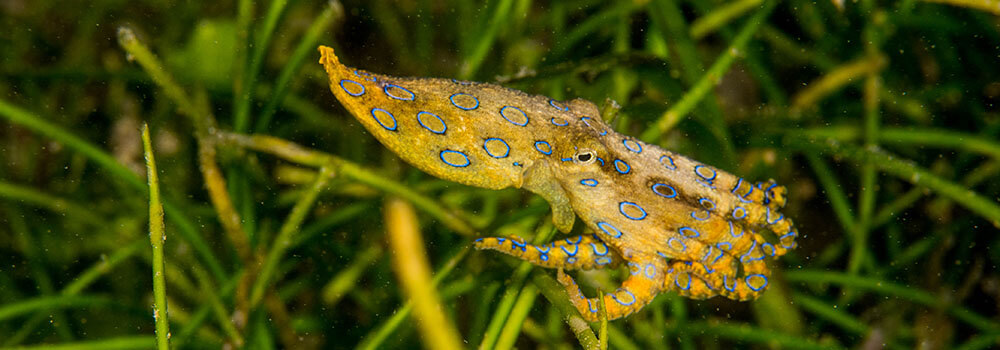
Banda Islands Snorkeling Tour, Nov, 2017 Trip Report
Admittedly, I am always excited to visit the Banda Islands for the historical content, but almost within the first moment that my facemask hits the water, I am reminded why I really love this place…the snorkeling! The reefs in the Banda Islands are still some of the most spectacular in the world. Every one of them, from Pulau Run to Pulau Hatta offers incredibly colorful and lush shallow reefs that seemed to be home to just about every species tropical fish in Indonesia! And each one of them is different enough to provide a unique backdrop to our activities.
Pulau Run and Pulau Ai, the two westernmost islands in the cluster of 10 volcanic or limestone islands that make up the Banda Island group, have extensive fringing reefs that harbor an incredible diversity of both hard and soft corals. On Pulau Run we were visited several times by a large school of very large bumphead parrotfish as they made their way up and down the reef looking for a good coral head to graze upon. Pulau Ai had just enough current to allow us to drift down the reef and watch as reef life unfolded as we passed by.
Moving eastward, we pulled into the historical harbor of Banda Niera and had the chance to visit Fort Belgica, one of the oldest standing forts built by the Dutch in the 17th century. But the highlight was our snorkel site called Lavaflow. In 1988, the volcano Api erupted spewing lava and lahar down the eastern flanks. The flow spilled into the water killing the vibrant reef that fringed from the shores. The story, however, has a great ending. The reefs that subsequently grew on top of the cooled and solidified magma are now as lush and diverse as they ever were! From huge stands of both hard and soft corals to the hundreds of species of reef fishes, this reef kept us entertained for hours and we only explored less than half of the total area!
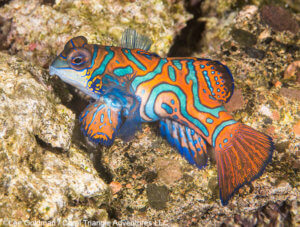
Mandarinfish
Later that afternoon, we visited the shores along Banda Niera to find the colorful mandarinfish. Again, no disappointment here as the mandarinfish were plentiful (we saw over 20 individuals), shallow (about 2-3 feet), and active. Our time around Banda Besar, Pulau Pisang, and Pulau Hatta were equally exciting with highlights that included blue-ring octopus, sharks, large Napolean wrasses, and a variety of habitats to explore.
From the Bandas, we set course to Raja Ampat with a day’s stop at Koon, an island off the eastern coast of Ceram. Koon gave us glimpses of what reef life would be like in an undisturbed environment. Big fish, big corals, and plenty of both throughout the entire length of the reef.
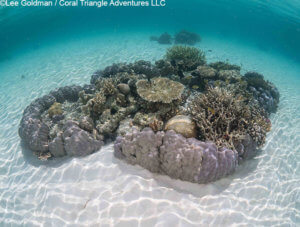
Micro-atolls…
Most of our time in Raja Ampat was spent around Misool and Batanta. Both islands possess incredible reefs and are some of the most scenic in terms of tropical island settings. My favorite things to see around the limestone islands of Misool are the shallow reefs that have ‘micro-atolls’, or types of coral growth where a massive coral (usually a species of Porites), limited by the shallow water, grows laterally rather than upward with a center that is often colonized by other corals. Misool is also known for a huge diversity if fish and we sure did get to see that on just about every snorkel.
Batanta island offers snorkelers the chance to see protected fringing reefs with some of the highest diversity of corals in Raja Ampat. Along with the thousands of fish that converge around the reef margins, the protected habitats also support a variety of cryptic critters like scorpionfishes, seahorses, crab-eyed gobies, and cuttlefishes. The protected habitats also give us the chance to see a good number of juvenile reef fishes such as juvenile barramundi cod, javanese damselfish, and several species of sweetlips.
Did I mention the weather? During our entire time onboard, including the three major sailings each no less than 10 hours in open sea, we experienced no more than a ripple on the ocean’s surface. Add that to incredible sunsets and we just about lucked out with the best weather imaginable.
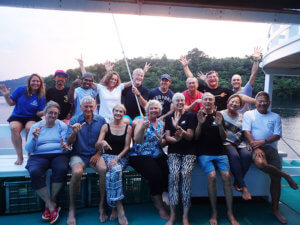
Group photo!
As we finished our epic program, cruising over 500 nautical miles from Ambon via the Banda Islands to Raja Ampat, we reflected on what a great trip this was. The Pindito was about as perfect as you could ask for. A great boat with an equally great crew and we very much thank them for making this a special trip for all of us. We absolutely look forward to working witht hem again on another snorkeling tour to the Bandas. Next time, however, the Banda Islands are worthy of a longer stay and our program will focus squarely on this amazing little cluster of islands in the middle of the Banda Sea. Look for it in 2020!


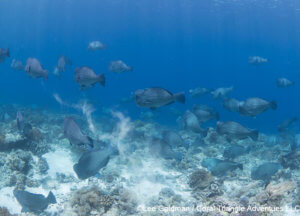

The trip to the Bandas was even better than Lee’s blog stated. Great weather, great group of snorkelers, great boat staff, great coral/fish and great leaders (yes, both of them). Everyday was a new adventure. A highly recommended adventure.
We have been on four trips with Lee and Ethan. This was an exceptional trip with a blue ringed octopus, mandarin fish, and so many crocodile fish. The accommodations were excellent, the lectures at night were interesting, and seeing the nutmeg farms and the fort was a treat. We recommend the trip to anyone interested in marine biodiversity.
Thanks Jo-Ann and Oren. Always a treat to have you guys with us!
Thanks John and Carol! Can’t wait to spend more time in the water with both of you…perhaps another pink frogfish :-)?